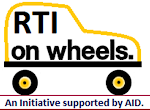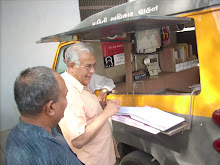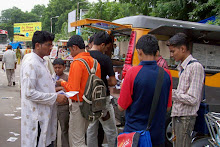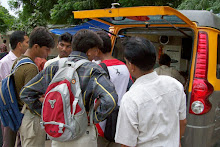Financial Express: Mumbai: Tuesday,
September 20, 2016.
It was
raining heavily last monsoon when Heerabai’s youngest child, Seshkumari, 4,
collapsed with a fever. The family could only watch helplessly as her
temperature soared and she turned delirious late night.
The nearest
primary health centre for Pachkol, Heerabai’s village in Chhindwara district in
south-west Madhya Pradesh, is 25 km away. And every monsoon, the swollen
Bhagbhel river floods the road linking the village to the health centre. If you
fall sick, said residents, you have very little hope of finding any medical
help.
“My daughter
couldn’t even recognise us as the fever got worse at two in the morning,”
recalled Heerabai, 30, lean and noticeably weak. That morning, she lost her
daughter.
Heerabai and
her three surviving children belong to Bhariya community, classified as a
Particularly Vulnerable Tribal Group (PVTG). Her tragedy is the consequence of
a 44 per cent shortfall in the healthcare infrastructure in the tribal areas of
Madhya Pradesh. This is despite the fact that, last year, the state government
had left in hand Rs 4,000 crore allocated for tribal welfare.
IndiaSpend’s
investigations, through a series of right-to-information (RTI) requests, reveal
that over the last 35 years, Rs 2.8 lakh crore ($42.6 billion) set aside to
improve the lives of scheduled castes (SCs) and scheduled tribes (STs) by way
of measures like mid-day meals, scholarships and crop insurance was simply not
spent.
NITI Aayog,
which monitors these funds, verified the figures calculated by IndiaSpend.
However, CEO Amitabh Kant distanced the organisation from the issue of
inadequate fund utilisation. “We are just (the) monitoring agency for the funds
and it’s the states and ministries that have to spend more. But we will step up
the monitoring and the present government is working on it,” he told
IndiaSpend.
The unspent
amount either lapsed or given back to the Centre is eight times larger than
India’s agriculture budget, enough to fund India’s rural road construction
projects for the next 15 years, and larger than the gross domestic product of
Serbia, Nepal or Jordan. If India were to distribute the Rs 2.8 lakh crore
among all of India’s 250 million STs and SCs, each would get Rs 11,289.
The unspent
Rs 2.8 lakh crore falls under two funds: Tribal Sub Plan (TSP), started in
1974-75, and Scheduled Caste Sub Plan (SCSP), begun in 1979-80, to channelise
funds from general budgets to STs and SCs.
As per
guidelines, a part of the budget proportionate to at least the population of
SCs and STs at both central and state levels is to be set aside for these
marginalised sections. The current population of SCs and STs in India is 16.6
per cent and 8.6 per cent. So, 16.6 per cent and 8.6 per cent of the Union
budget should be allocated to SCSP and TSP, respectively. The same applies to
the states too.
Not just
that, each ministry, whether state or central, has to keep aside the same
percentage of their total funds for SCSP and TSP to carry out individual,
family or habitat development works and welfare schemes for SCs and STs.
For instance,
the Human Resource Development Ministry has to set apart funds under the two
strategies for building schools, providing nutritious meals and scholarships
and other similar measures for SCs and STs. Similarly, the Agriculture Ministry
has to set aside funds for providing subsidised seeds and fertilisers and crop
insurance to SC and ST farmers.
The funds are
“non-lapsable” as per the guidelines issued in 2006 and 2014 by the erstwhile
Planning Commission, now NITI Aayog. But low spending has crippled the effort.
Records show that no matter which party is in power, SCs and STs rarely benefit
from these funds.
While Andhra
Pradesh, Uttar Pradesh and Punjab top the list for SCSP funds remaining unspent
for 2005-14, Jharkhand, Odisha and Andhra Pradesh lead in TSP.
Also, the
percentage of unspent amount is alarmingly high. For instance, it is as high as
61 per cent or Rs 4,643 crore for Telangana in 2014-15. The real unspent amount
will be even higher, because data on expenditure are not available for many
years with the various governments.
P.S.
Krishnan, a bespectacled 83-year-old retired IAS officer and former Secretary
to the Government of India, was the man behind the introduction of SCSP in
1980. He spoke animatedly about how former Prime Minister Indira Gandhi cut
through red-tape by issuing a letter to roll out the strategy.
Krishnan’s
face darkened as he talked of its tardy implementation. “Politicians and
bureaucrats have always remained apathetic to the most backward classes —
dalits and adivasis,” he said.
In the letter
announcing SCSP in 1980, Indira Gandhi wrote: “While they constitute 15 per
cent of the total population of the country, their proportion is much larger in
the poverty groups of the country, most of the SCs are below the poverty line.”
Thirty-six
years on, the situation has not changed much.
Adivasis and
dalits still matter the least when it comes to the provision of even basic
facilities like household ownership, electricity, latrines and water
connections. Where they do figure prominently are in statistics relating to
child mortality, school dropouts and extreme poverty.
For instance,
the child mortality rate among STs (35.8) is almost double in comparison to all
social groups (18.4).
In the house
next to Heera’s two-room tenement, an electric bulb hangs from the roof, but
it’s filled with kerosene. It has a wick instead of a filament. Actually,
Pachkol, with all its woes, is marginally better off than Jad, a village about
a three-hour trek away. It has no electricity, water supply or roads.
How do the
villagers travel? “We ride her and even take the ill to hospital on her,” says
teenager Sriram, pointing to Kalli, his bay mare. Jad also has rusty electric
poles, over a decade old. They stand without any wiring, an election promise
that was never fulfilled.
The National
Democratic Alliance (NDA) has not changed the 35-year pattern of neglecting to
spend the funds.
As per the
guidelines, the funds that remain unspent at the end of a financial year are
supposed to be transferred to a non-lapsable central pool to be used later. But
that, actually, is not what happens.
“The concept
of transfer of unutilised TSP funds to NLCPTF (central pool of TSP funds)
remained a non-starter,” the Comptroller and Auditor General had noted in a
2015 audit report of TSP funds.
A senior NITI
Aayog official, who spoke to IndiaSpend on condition of anonymity, confirmed
that unspent funds are being “lapsed”, not carried forward to the next year as
per rules. “The committee is informed that there has been ‘poor utilisation’ of
the allocated funds for welfare of SCs and STs,” says NITI Aayog in its latest
guidelines to the states.
In January
2016, with only three months left for the financial year to end, the Karnataka
Chief Minister warned officials of strict action against some departments for
keeping the expenditure as low as “0.87 per cent”.
Outside
Heera’s home, a group of villagers had gathered. They were reluctant to speak
up about their lives. One man, however, disagreed with the silence: “We need to
talk about our problems; only then, they will be solved.”














































































